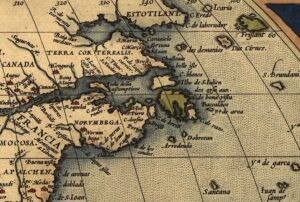Deep in the forests of southeastern Siberia, the Patomisky Crater is a mysterious mound of shattered limestone that protrudes from the hillside vegetation. It has no clear origin. It changes shape, and rises and falls as the years go by. Is this thing alive?
Background
The indigenous group of the Irkutsk region, the Yakut, believed that this area is cursed. Supposedly, illness and death followed those who dared to venture there. A modern expedition led by geologist Eugeny Vorobiev seemed to substantiate this when Vorobiev dropped dead, presumably of a heart attack.
In 1949, a Russian geologist Vadim Kolpakov became the first outsider to come across it. According to The Siberian Times, the astonished Kolpakov described it as “a perfectly shaped mount the size of a 25-story building with a chopped-off top sitting in the middle of the woods.”
Paradoxically, he also thought that it was “an archaeological artifact” but “not the work of a human.” Kolpakov wondered whether it was of volcanic origin or even a top-secret creation of Stalin. Locals named it Patomskiy Crater, after the nearby Patom River.

Photo: The Siberian Times
Apart from a couple of articles on Russian websites, information on the crater is somewhat scarce. This is due to the lack of funding for scientific expeditions. Currently, we have to deal mainly with theories.
Characteristics
The oddity earned its nickname, “Fire Eagle’s Nest,” from its shape: a cone of grey, shattered, limestone with a spherical mound in its center. It is 40m high and 160m in diameter, and the center mound measures 12m high. Somehow, scientists have determined that it weighs over a million tons. It also contains some magnetic anomalies and possesses low levels of radioactive strontium and uranium. As for its age, Siberian researchers believe that it is a mere 350 years old.
It tends to change shape slightly over the years, which scientists have trouble explaining.
Theories
The million-dollar question is: who or what created it? Right now, the leading theories of volcanic, geological, or meteoritic origin are competing for supremacy.
The meteorite theory held traction in academic circles for a while. It suggests that a meteor smashed into the Earth and opened up a long-suppressed gas pocket. In order to create this oddly shaped crater, the object must have been cylindrical. Some have linked this theory to the Tunguska Event but since the Tunguska meteor strike happened in 1908, the dates don’t match. This crater came long before.
The site Russia Beyond claims that scientists concluded that the Patom Crater was formed by a phreatic (volcanic) explosion, similar to Krakatoa. Kolpakov himself first thought that the crater was a volcano.

The crater at ground level. Photo: The Siberian Times
In 2015, a special conference studied the crater’s origins and suggested that magma could have created steam and immense pressure, causing explosions within the rock.
Tree ring analysis picked up possible evidence of nuclear influences. The rings start to get narrow, and the vegetation around the crater experiences abnormal growth spurts which many associate with radiation. One study discovered that many of these trees fell in 1841.
The nuclear testing theory
Was this perhaps a site where nuclear experimentation took place? Siberia’s remoteness made it a perfect spot for all kinds of Soviet activities, from penal colonies to energy production. The Cold War saw an exponential increase in secret nuclear testing. Or was it a result of a meteor impact that carried radiation?
The combination of radiation and meteor activity sounds quite plausible and would explain the tree ring anomaly. However, the radiation levels are not high enough to have caused the fallen and broken trees nearby.
Dmitry Demezhko from the Institute of Geophysics believes that geology and volcanism are working together under the surface here. He proposes that the crater came about when an underground channel forced molten rock upwards. A constant freeze-thaw cycle ultimately caused the rock to break.
The least likely theory is that the crater was formerly a secret uranium mining operation from Stalin’s days. It would not be the first time that this dictator hid programs away from the public. Perhaps no one dared to go there, and the fearful legacy of this dictator hindered further study on the site.
A small community of conspiracists believe that forces beyond our earthly understanding — UFOs, supernatural creatures, ancient civilizations — created this structure. Local legends and the coincidental death of that researcher catapulted such theories into the spotlight.
Conclusion
Most likely, the Patomskiy Crater formed from a combination of geomorphological and volcanic processes. Shifting levels in pressure, water, and other chemicals can explain the changes in shape. While the meteor theory does have weight to it, this doesn’t add up in other ways. We need to do more digging, literally, to learn more.





